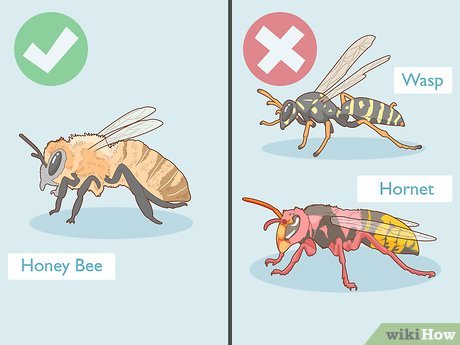
Finding a bee buzzing around your home can be a startling experience. It’s natural to feel a surge of anxiety, but remember that bees are generally docile creatures and pose little threat unless provoked. The key to safely removing a bee from your house is to remain calm and avoid any actions that might agitate it. This article will guide you through the process step-by-step, providing practical tips on how to handle the situation effectively and peacefully.
This article will explore the best practices for safely removing bees from your home, emphasizing the importance of calmness and respect for these beneficial insects. We’ll cover techniques for creating escape routes, guiding bees out of rooms, and handling situations where a bee is trapped. By following these guidelines, you can ensure both your safety and the well-being of the bee.
Bee Removal at Home
Removing a bee from your home doesn’t necessarily require professional intervention. With a little patience and the right approach, you can often handle the situation yourself. The most important thing is to act calmly and avoid making sudden movements that might startle the bee. Remember, bees are essential pollinators and play a vital role in our ecosystem, so treating them with respect is crucial.
Start by assessing the situation. Is the bee flying freely or trapped in a particular room? Once you have a better understanding of its location, you can begin implementing the appropriate removal techniques. Keep in mind that different scenarios may require slightly different approaches.
Staying Calm and Avoiding Swatting
Panic is your worst enemy when dealing with a bee in your home. Swatting at it will only agitate the bee and increase the likelihood of it stinging. Instead, take a deep breath and try to remain calm. Speak in a soothing voice and avoid making any sudden movements that might startle the bee. Remember, bees are more likely to sting if they feel threatened or cornered.
By staying calm, you can create a less stressful environment for both yourself and the bee. This will increase your chances of successfully guiding it out of your home without resorting to harmful methods.
Creating an Escape Route
Bees are naturally drawn to open spaces. To encourage a bee to leave your home voluntarily, create a clear escape route by opening windows and doors. If possible, choose an exit that leads directly to an outdoor area where the bee can safely return to its hive.
Once you’ve opened the desired exits, turn off any lights inside the room where the bee is located. This will help reduce the bee’s disorientation and make it easier for it to find its way out.
Guiding the Bee Out
Gently guide the bee towards the open exit using a piece of cardboard or a cup and brush. Avoid making direct contact with the bee, as this could provoke it. Instead, slowly move the cardboard or cup closer to the bee, creating a funnel-like shape that encourages it to fly into the opening.
If the bee seems hesitant to leave, you can try gently blowing on it from behind, guiding it towards the exit. Remember to be patient and avoid rushing the process.
Trapped Bees
If a bee is trapped in a room with no obvious escape route, turn off all lights and cover any openings except the one you intend to use for exit. This will create a confined space where the bee can eventually find its way out. Once outside, the bee can safely return to its hive.
Remember, bees are essential pollinators, so treat them with respect and aim for a peaceful removal.
Conclusion
Removing a bee from your home doesn’t have to be a stressful experience. By following these simple steps, you can safely and effectively guide the bee back outdoors. Remember to stay calm, avoid swatting, create an escape route, and gently guide the bee towards freedom. With a little patience and understanding, you can ensure both your safety and the well-being of this important pollinator.
